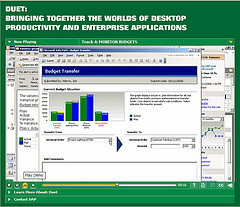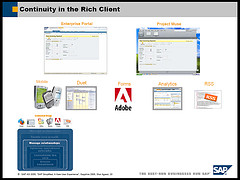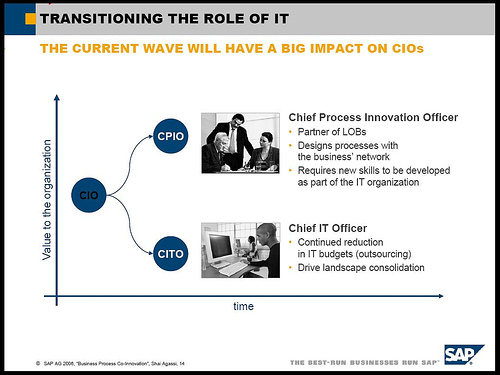 Having seen it at SAPPHIRE 06, I wrote about the importance of Duet for both SAP and Microsoft: “Duet’s importance by far exceeds what the limited number of currently available scenarios might imply: for SAP it means potentially tripling / quadrapling their user base, even if indirectly, and for Microsoft it’s another way to lock users into their Office suite.”
Having seen it at SAPPHIRE 06, I wrote about the importance of Duet for both SAP and Microsoft: “Duet’s importance by far exceeds what the limited number of currently available scenarios might imply: for SAP it means potentially tripling / quadrapling their user base, even if indirectly, and for Microsoft it’s another way to lock users into their Office suite.”
Jason Wood posted an insightful, analytical article on his blog with screenprints and all the bells and whistles.
Now there is an online video showing several scenarios. Use the pull-down menu to select the different tracks available.




 Quick news from the press conference at SAPPHIRE 2006: Shai Agassi has just announced the all-cash acquistion of
Quick news from the press conference at SAPPHIRE 2006: Shai Agassi has just announced the all-cash acquistion of  as Leo Apotheker clarified during the Press Conference, over time all SAP’s offering will be made available in the “hybrid” model.
as Leo Apotheker clarified during the Press Conference, over time all SAP’s offering will be made available in the “hybrid” model.
Recent Comments